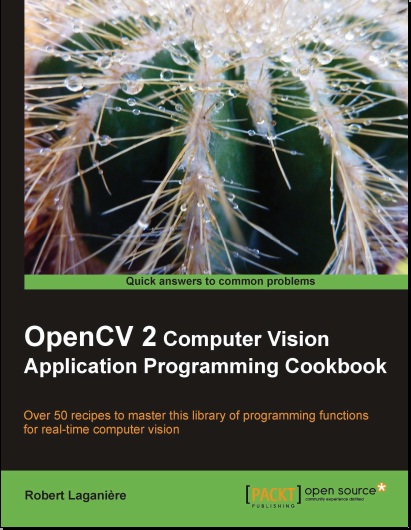About the Author:
Robert Laganière is a professor at the University of Ottawa, Canada. He received his Ph.D.
degree from INRS-Telecommunications in Montreal in 1996. Dr. Laganière is a researcher in
computer vision with an interest in video analysis, intelligent visual surveillance, and image-
based modeling. He is a co-founding member of the VIVA research lab. He is also a Chief
Scientist at iWatchLife.com, a company offering a cloud-based solution for remote monitoring.
Dr. Laganière is the co-author of Object-oriented Software Engineering published by McGraw
Hill in 2001.
About the Reviewers:
Wajih Ullah Baig holds a Honors. Degree in Computer Science from Hamdard University,
Karachi. He works mostly with with desktop applications and has good experience working
with large-scale distributed systems. He has interest in DSP, image processing, pattern
recognition, and network programming. He has worked on a large-scale content-based video
retrieval project which is one of its kind. Currently, he is working with the Center for Advanced
Research in Engineering, Islamabad, Pakistan where he holds a position as a design engineer.
As a freelancer, he contributes work for open source projects and posts codes of his own.
What this book covers:
Chapter 1, Playing with Images, introduces the OpenCV library and shows you how to run
simple applications using the MS Visual C++ and Qt development environments.
Chapter 2, Manipulating the Pixels, explains how an image can be read. It describes different
methods for scanning an image in order to perform an operation on each of its pixels. You will
DOVR#OHDUQ#KRZ#WR#GHÀQH#UHJLRQ#RI#LQWHUHVW#LQVLGH#DQ#LPDJH
Chapter 3, Processing Images with Classes, consists of recipes which present various object-
oriented design patterns that can help you to build better computer vision applications.
Chapter 4, Counting the Pixels with Histograms, shows you how to compute image histograms
and how they can be used to modify an image. Different applications based on histograms are
presented that achieve image segmentation, object detection, and image retrieval.
Chapter 5, Transforming Images with Morphological Operations, explores the concept of
mathematical morphology. It presents different operators and how they can be used to detect
edges, corners, and segments in images.
Chapter 6, Filtering the Images, teaches you the principle of frequency analysis and image
ÀOWHULQJ#,W#VKRZV#KRZ#ORZSDVV#DQG#KLJKSDVV#ÀOWHUV#FDQ#EH#DSSOLHG#WR#LPDJHV#,W#SUHVHQWV#WKH#
two image derivative operators: the gradient and the Laplacian.
Chapter 7, Extracting Lines, Contours, and Components, focuses on the detection of
geometric image features. It explains how to extract contours, lines, and connected
components in an image.
Chapter 8, Detecting and Matching Interest Points, describes various feature point detectors
in images. It also explains how descriptors of interest points can be computed and used to
match points between images.
Chapter 9, Estimating Projective Relations in Images, analyzes the different relations involved
in image formation. It also explores the projective relations that exist between two images of a
same scene.
Chapter 10, Processing Video Sequences, provides a framework to read and write a video
sequence and to process its frames. It also shows you how it is possible to track feature
points from frame to frame, and how to extract the foreground objects moving in front of a
camera.
Who this book is written for:
If you are a novice C++ programmer who wants to learn how to use the OpenCV library to build computer vision applications, then this cookbook is appropriate for you. It is also suitable for professional software developers wishing to be introduced to the concepts of computer vision programming. It can be used as a companion book in university-level computer vision courses. It constitutes an excellent reference for graduate students and researchers in image processing and computer vision. The book provides a good combination of basic to advanced recipes. Basic knowledge of C++ is required.
Download:


.jpg)






0 comments:
Post a Comment